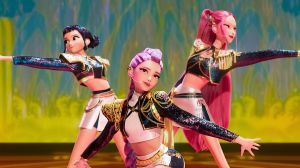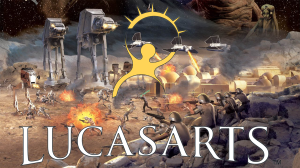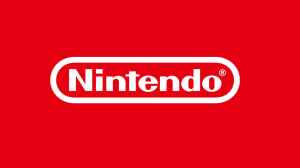“Now the Kombat kontinues,” reads the intro for 1993’s Mortal Kombat II. The dead pool of the Midway arcade game expanded with a roster of new playable fighters like Lin Kuei warrior Sub-Zero II, the assassin Kitana and cloned “twin sister” Mileena, former Shaolin Monk Kung Lao, Maj. Jackson “Jax” Briggs, and the mutant Tarkatan Baraka. The blood-spilling sequel also brought back combatants from 1992’s Mortal Kombat: thunder god Raiden, Shaolin Tournament champion Liu Kang, and martial arts movie star Johnny Cage.
Videos by ComicBook.com
In MKII, Mortal Kombat boss Shang Tsung brought the warriors to the Outworld — dark realm of evil Emperor Shao Kahn — to fight in a second contest to determine the fate of the Earth Realm. That is what’s at stake in the Mortal Kombat II movie, which brings Karl Urban’s Johnny Cage to the big screen after 2021’s Mortal Kombat teased MMA fighter Cole Young’s (Lewis Tan) trip to Hollywood.
“The nice thing about a franchise like Mortal Kombat is you go into the arcade, put in your quarter, you choose a different character each time and you have a different adventure each time,” screenwriter Jeremy Slater tells ComicBook. “In a lot of ways, Mortal Kombat lends itself to having new protagonists and new stories, in a way other franchises don’t.”

RELATED: Mortal Kombat 1 Announces New Mortal Kombat 2 Movie-Inspired Skins
Like the video game, which doubled its roster of playable characters, Mortal Kombat II adds newcomers Kitana (Adeline Rudolph), the Edenian Jade (Tati Gabrielle), black arts sorcerer Quan Chi (Damon Herriman, who voiced Kabal in the first film), and Shao Kahn (Martyn Ford).
After the Outworld sorcerer Shang Tsung (Chin Han) sent his forces to preemptively eliminate Earth’s champions before the prophesied tenth tournament — including Cole, Liu Kang (Ludi Lin), Jax (Mehcad Brooks), Sonya Blade (Jessica McNamee), and fatalities Kung Lao (Max Huang) and Kano (Josh Lawson) — the Mortal Kombat Tournament will get underway in Mortal Kombat II.
“We came in with certain guide posts that were already in place,” Slater says of the first Mortal Kombat, scripted by Greg Russo and Dave Callaham from a story by Russo and Oren Uziel. “The previous movie promised there was a tournament coming and that Johnny Cage was going to be part of the story, somehow. Those were the two things we knew we had to work with and around.”
“I was adamant that we had to have this tournament in the movie. We can’t make people wait another movie and then be like, ‘Come back for the finale,’” Slater continues. “It was finding a structure to make the tournament as satisfying as you want it to be because this had years of build-up. It’s figuring out who the individual matches are going to be, which characters do you pair off for maximum emotional impact, but also for the most dynamic fights. Then, also, what is the larger story you are telling between the tournament?”
Slater recognizes that a lot of kung-fu and martial arts tournament movies have fight scenes interspersed with “a lot of sitting around waiting,” and, no pun intended, “killing time between stages.”
“I was very cognizant of that — that we need to be telling a story on the margins where there is just as much exciting stuff happening outside of the tournament as inside of the tournament, so you’re never bored and both of these stories are moving the movie forward,” the Moon Knight and Godzilla x Kong: The New Empire scribe says.

Slater identified the characters who were “serviced in the last movie and got a lot of screen time and had a completed arc,” meaning they don’t require “quite as much” focus in the sequel.
“It’s a cast of 20 people. It’s very easy for these things to become three-to-four-hour, sprawling epics, so you always have to be judicious in cutting things down and [focused on] what’s the emotional story we are telling, and what is the story the audience cares about,” he explains. “Then making sure when you get to those moments that matter — the fights, the fatalities, the surprises, the deaths — that they land and they are as satisfying as everyone wants them to be. I think we nailed it.”
Mortal Kombat II “had the best stunt team in the business,” Slater says. “The actors are phenomenal. It’s so much funnier and bigger than the first movie.”
Asked if he takes the actors’ own martial arts abilities into consideration while scripting those match-ups, Slater says “so much of the groundwork was laid by Simon and the casting that was done on the first movie,” including Tan, Lin, and Huang.
“They are actually world-class martial artists. They are the best of the best and they can also act,” he says. “And they are really nice guys and embody their characters. It freed me up in the sense that I didn’t have to go, ‘This guy can fight, but he can’t act. This guy can act, but he can’t fight.’ It was a group that could do everything. That’s really freeing as a writer because it lets you write the best story for those characters and for those moments. You just trust that a guy like Lewis is talented enough to pull off whatever you need him to do … and he always was. That guy is awesome.”

While much of the fight choreography was left in the capable hands of fight coordinator Malay Kim (Marvel’s Shang-Chi and the Legend of the Ten Rings) and Michael Lehr (The Continental: From the World of John Wick), Slater’s job was to “sell the emotional story and then sell the big beats” on the page.
“I know in my head, ‘Here’s the big gags. Here’s the gore gags. Here’s the part where the audience thinks it is going to go this way and we are going to flip it on its head,’” Slater says. “You track it out there and you come up with your own gags. Some of those gags that I came up with made it into the movie. Some of them are the process of them handing the two-pages of script off to the stunt team, and the stunt team start imagining. They start coming up with new ways of, ‘Oh, wouldn’t it be cool if this guy used his powers here? Maybe he bounces off this guy.’ They wear their homemade costumes and they go into the warehouse full of boxes. They start building these fight scenes of them miming, ‘Here is what it could look like.’”
As McQuoid worked with the stunt team to develop the combat of Mortal Kombat, “Each time the stunt [performers] would just come back with something bigger and crazier. The stuff that was on the page I was proud of. But the stuff that is in the finished movie is so much better, and so much better and more epic than what I came up with.”
Slater has proven his fan cred before, having developed the comic book-based Netflix series The Umbrella Academy and creating the Marvel Disney+ series Moon Knight, as well as The Exorcist TV series. He co-wrote Godzilla x Kong: The New Empire, and if the Monsterverse brawler felt like a beat-’em-up video game, that was by design: Slater is a hardcore fan of Mortal Kombat.
“I’m a huge gamer and Mortal Kombat was one of those games where I had to beg my parents to buy me a Genesis. In the Genesis version, there is actual blood,” Slater recalls of the MA-13-rated video game. “And in the Super Nintendo version, when you punch people, white sweat flew off of them. I was like, ‘You have to have the blood.’ I pumped so many damn quarters into that machine.”
During a visit to the Australian set during a brief round of reshoots last year, Slater was fortunate enough to have the “genuinely surreal” experience of meeting the cast decked out in costume.
“Look through my phone and there’s pictures of me next to Raiden, Kitana, and Baraka. If I could go back in time to that 13-year-old me who is standing in that Pizza Hut with his roll of quarters, waiting to put his quarter down for the next game and be like, ‘Someday you are going to be taking pictures with the real-life versions of these characters and be a small part in bringing them to life…’ it’s a tremendous honor and incredibly cool. It was one of those days where you are just pinching yourself. ‘Wow, I just had a full conversation with Liu Kang, in his warrior robes.’ Then, you watch him walk out and beat the ever-loving sh-t out of someone with the craziest moves you have ever seen.”
While 2021’s Mortal Kombat reboot opened simultaneously in theaters and on HBO Max, going on to gross just $84.4 million at the global box office mid-pandemic, the sequel will be getting an exclusive theatrical release in IMAX.
“I’m so excited for people to see the movie,” Slater says of his very first video game adaptation. “It’s been done for a while. We’ve been waiting for the right release date and waiting for the right window. I have been to those test screenings, which are full of Mortal Kombat fans, and watching them react to it the way I reacted to Avengers: Endgame. They were cheering and jumping out of their seats. Every joke is landing and they are loving it. It’s one of the greatest moments of my life. That’s why you get into this business.”
Now the Kombat kontinues… when Mortal Kombat II hits theaters on October 24.








